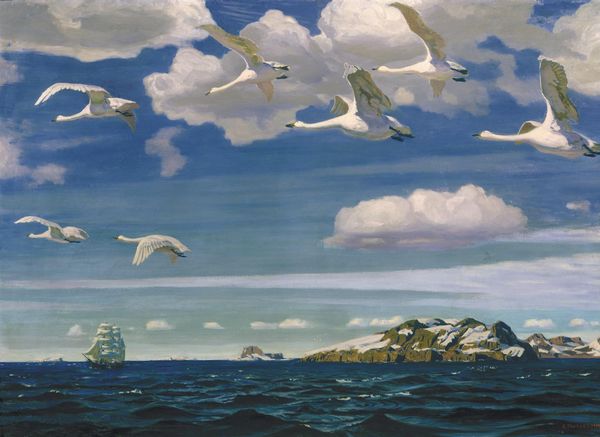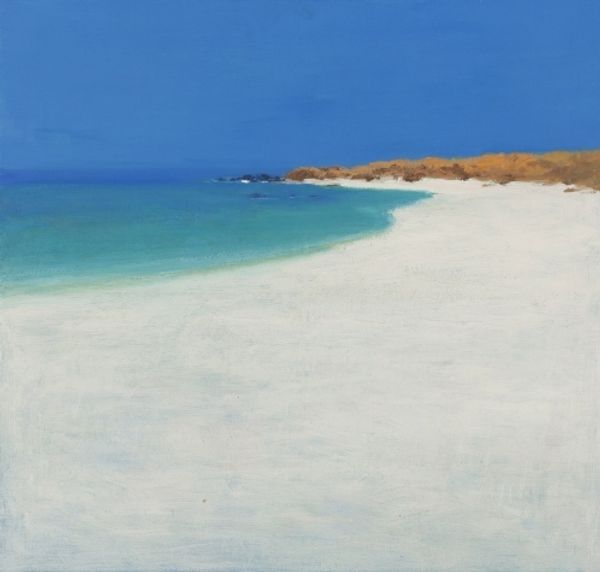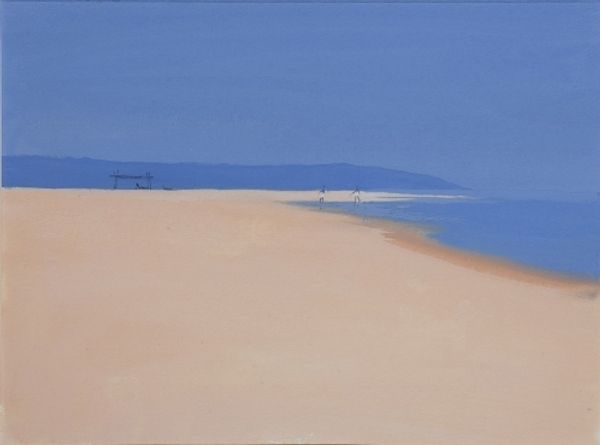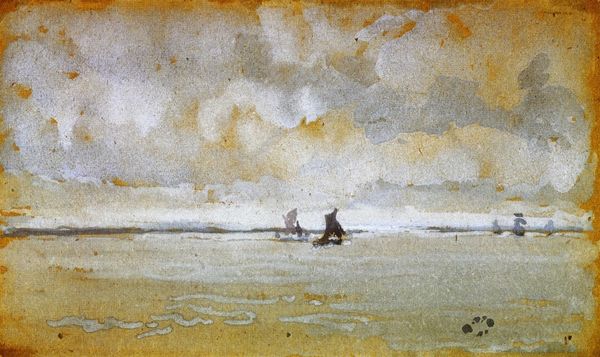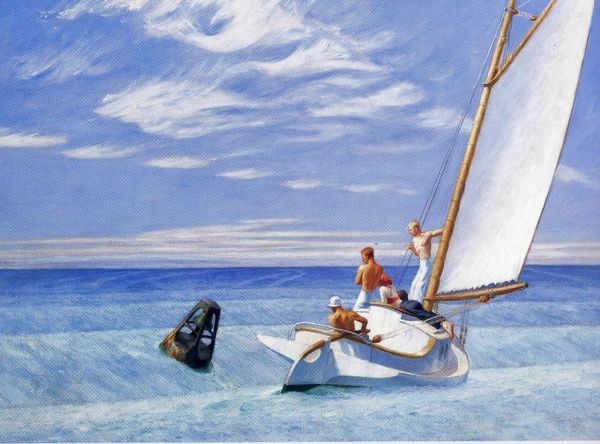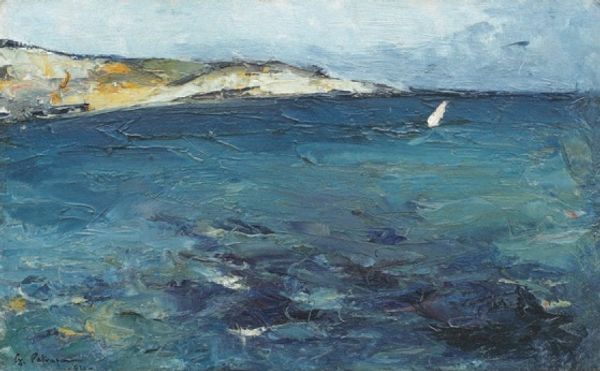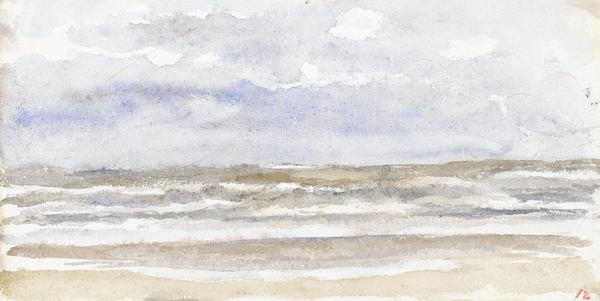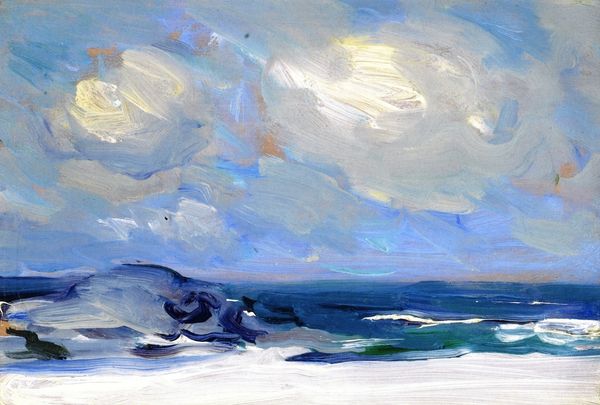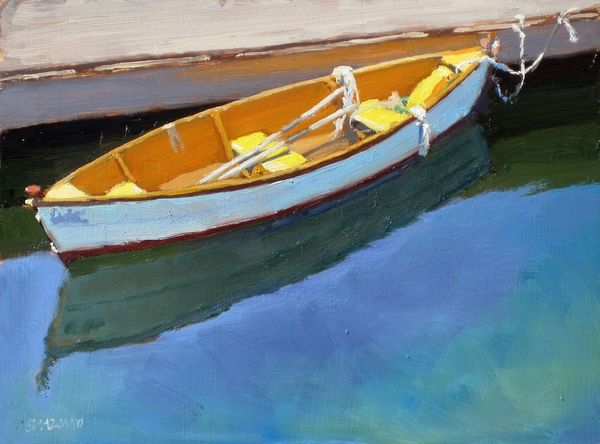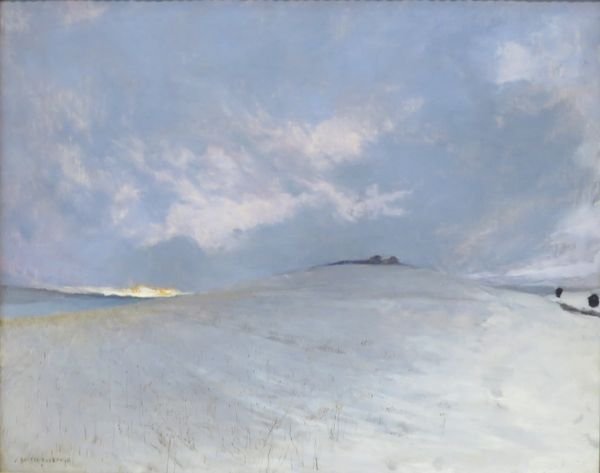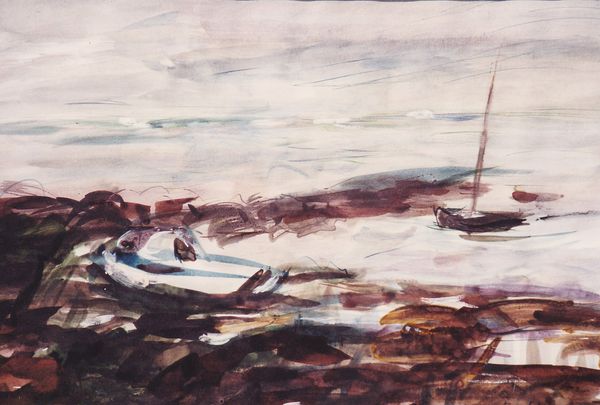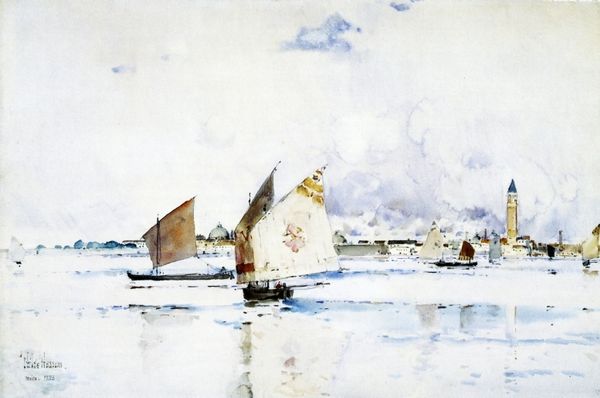
painting, plein-air, oil-paint
#
painting
#
plein-air
#
oil-paint
#
landscape
#
oil painting
#
neo expressionist
#
cityscape
#
modernism
#
realism
#
sea
Dimensions: 76.8 x 50.8 cm
Copyright: Edward Hopper,Fair Use
Editor: This is Edward Hopper's "The Long Leg," painted in 1930. It’s an oil painting, and I’m immediately struck by its serene stillness, but there’s also something unsettling about the isolation of the sailboat and the lighthouse in the background. How do you interpret this work within its historical context? Curator: Hopper’s works, including "The Long Leg," often capture a sense of American solitude that was heightened during the interwar period. While he claimed not to consciously infuse social commentary into his work, his art arguably reflects the post-World War I disillusionment and the anxieties brewing during the Great Depression. Do you see a visual manifestation of these anxieties in the way the lighthouse looms almost like a watchful presence, and the boat feels isolated in all of the ocean? Editor: I do! Especially given how the boat's name references navigation and the human body. Does it mean Hopper saw how society in this time was cut off and not sailing with two strong legs, and instead drifting in troubled seas? I’d have to agree. Considering that the location of this scene is the Eastern coast of the USA, can the artwork carry messages related to the nation's identity and history as well? Curator: Exactly. The nautical theme and the lighthouse were strong, loaded symbols, reflecting not just American maritime history and industry but also anxieties around it and its waning influence on trade and global identity. Hopper perhaps wanted the audience to feel small in comparison to bigger powers. Where, prior to the Great Wars, the sea would inspire pride in the growing economy of the States. It is this juxtaposition of sea, nautical reference and loneliness that sets up an environment for such discussions. Editor: I’ve never thought about how something as simple as a landscape painting can also reflect bigger, relevant cultural problems. That makes me look at Hopper’s artwork in a new way! Curator: It’s important to remember that while an artist's intentions are relevant, so too is the dialogue that opens between art and audiences within society and throughout history. Thank you, Editor. Editor: Thanks for shining new light on the artwork!
Comments
No comments
Be the first to comment and join the conversation on the ultimate creative platform.
